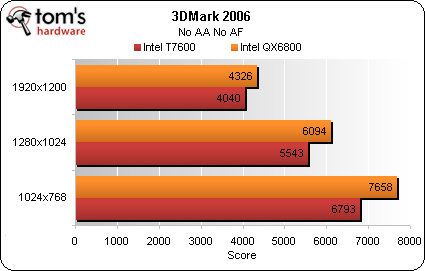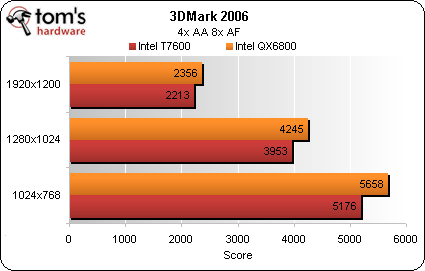Can CPUs Make PCs Faster & Quieter?
3DMark05
This set of benchmarks runs a series of video source materials through the system and measures their graphics performance at two different settings: first, with anisotropic filtering (No AF) and anti-aliasing (No AA) turned off, then with 4x anti-aliasing (4xAA) and 8x anisotropic filtering (8xAF) turned on. These results show how the graphics subsystem performs with (4xAA 8xAF) and without (No AA No AF) complex shading and edge filtering mechanisms enabled. Without these visual enhancements turned on scores go up, but the video is less attractive; with these visual enhancements enabled scores go down, but the video looks better. This matters much more for gaming than for DVD video, while offering a useful metric for graphics subsystem performance.
What's interesting when comparing these two systems is how CPU differences matter progressively less as output resolution increases. At 1024x768, the difference is 12%, which drops to 9% at 1280x1024, and 7% at 1920x1200 (No AA, No AF). With 4xAA 8xAF turned on, those deltas are 9% (1024x768), 7% (1280x1024) and 6% (1920x1200). If anything, this shows the importance of the graphics card when seeking to boost 3D scores more than it contrasts capabilities of the QX6800 versus the T7600.
Get Tom's Hardware's best news and in-depth reviews, straight to your inbox.

